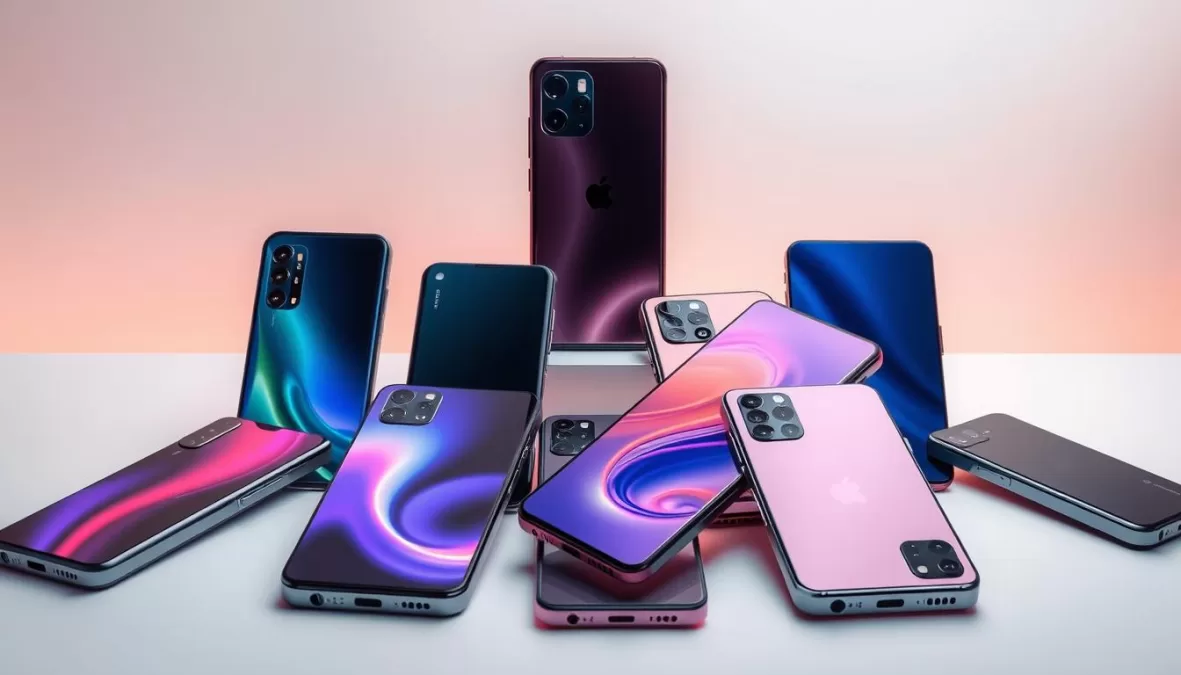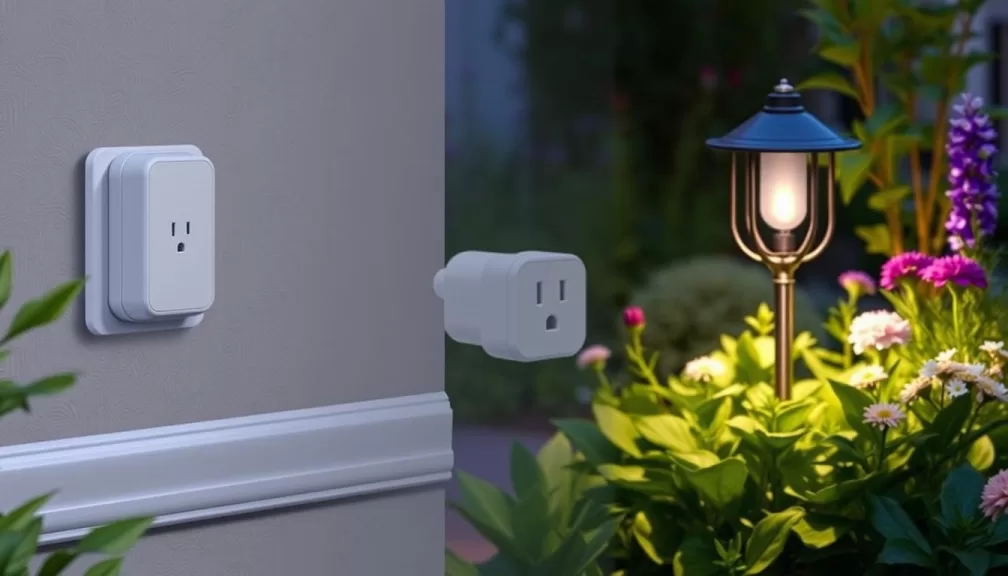The smartphone landscape is rapidly evolving, with cutting-edge AI features and revolutionary camera systems becoming the norm. In this comprehensive guide, we’ll explore the latest innovations and technological advancements in the top smartphones of 2025.
Devices from major manufacturers like Samsung, Apple, Google, OnePlus, and Xiaomi are pushing the boundaries of what’s possible in a smartphone. Our detailed rankings will help you make an informed decision, whether you’re looking for the ultimate flagship experience or the best value for your money.
Key Takeaways
- Discover the top smartphones of 2025 with the latest features and technologies.
- Learn about the performance and features that make these devices stand out.
- Explore devices from top manufacturers like Samsung, Apple, and Google.
- Find the best smartphone for your needs, whether it’s a flagship or a budget-friendly option.
- Get insights into the latest innovations in the smartphone industry.
What Makes a Great Smartphone in 2025
The smartphone landscape has evolved dramatically by 2025, redefining what makes a great smartphone. With rapid advancements in technology, the focus has shifted from mere specifications to a more holistic user experience, encompassing performance, display quality, camera capabilities, and battery life.
Performance and Processing Power
In 2025, a great smartphone is characterized by its processing power, particularly in handling AI tasks efficiently. Modern flagship phones are equipped with specialized neural processing units (NPUs) that manage complex AI operations while maintaining energy efficiency. The Snapdragon Elite chipset has become the gold standard for Android flagships, offering exceptional performance and thermal efficiency. This results in smoother user experiences, whether it’s gaming, multitasking, or running demanding applications.
Display Quality and Technology
Display technology has reached new heights in 2025, with features like adaptive refresh rates, higher brightness levels exceeding 3,000 nits, and anti-reflective coatings that significantly improve outdoor visibility. These advancements ensure that the display is not only visually appealing but also usable in various lighting conditions. The quality of the screen has become a critical factor in determining the overall user experience.
Camera Capabilities
Camera systems in 2025 leverage computational photography more than ever, with AI algorithms enhancing photos in real-time and creating stunning images even in challenging lighting conditions. The focus is on delivering superior camera performance, with features like advanced zoom capabilities, improved low-light sensitivity, and enhanced portrait mode effects. These advancements have made smartphone cameras indispensable for both casual and professional photography.
Battery Life and Charging Speed
Battery technology has seen incremental improvements, but charging speeds have dramatically increased. Many phones now support 100W+ wired charging and 50W+ wireless charging, significantly reducing downtime. A great smartphone in 2025 balances battery life with fast charging capabilities, ensuring that users can quickly recharge their devices when needed.
| Feature | 2024 | 2025 |
|---|---|---|
| Processor | Octa-core | Snapdragon Elite |
| Display Brightness | Up to 2,000 nits | Exceeding 3,000 nits |
| Charging Speed | Up to 50W | 100W+ wired, 50W+ wireless |
| Camera Enhancements | Basic AI enhancements | Advanced computational photography |
In conclusion, a great smartphone in 2025 is defined by its ability to deliver a comprehensive user experience, combining powerful performance, superior display and camera capabilities, and efficient battery life with fast charging speeds.
How We Tested These Phones
We tested the top phones of 2025 using a multi-faceted approach to determine their true capabilities. Our comprehensive testing methodology involves using each phone as a daily driver for at least two weeks to evaluate real-world performance beyond synthetic benchmarks.
Our Testing Methodology
To get a thorough understanding of each phone’s capabilities, we conducted a series of tests. Battery life was a key area of focus, with standardized tests simulating typical usage patterns such as video streaming, gaming, social media browsing, and camera use.
Camera testing was another crucial aspect, involving shooting in various lighting conditions, from bright daylight to challenging low-light environments, as well as testing special features like night mode and portrait effects.
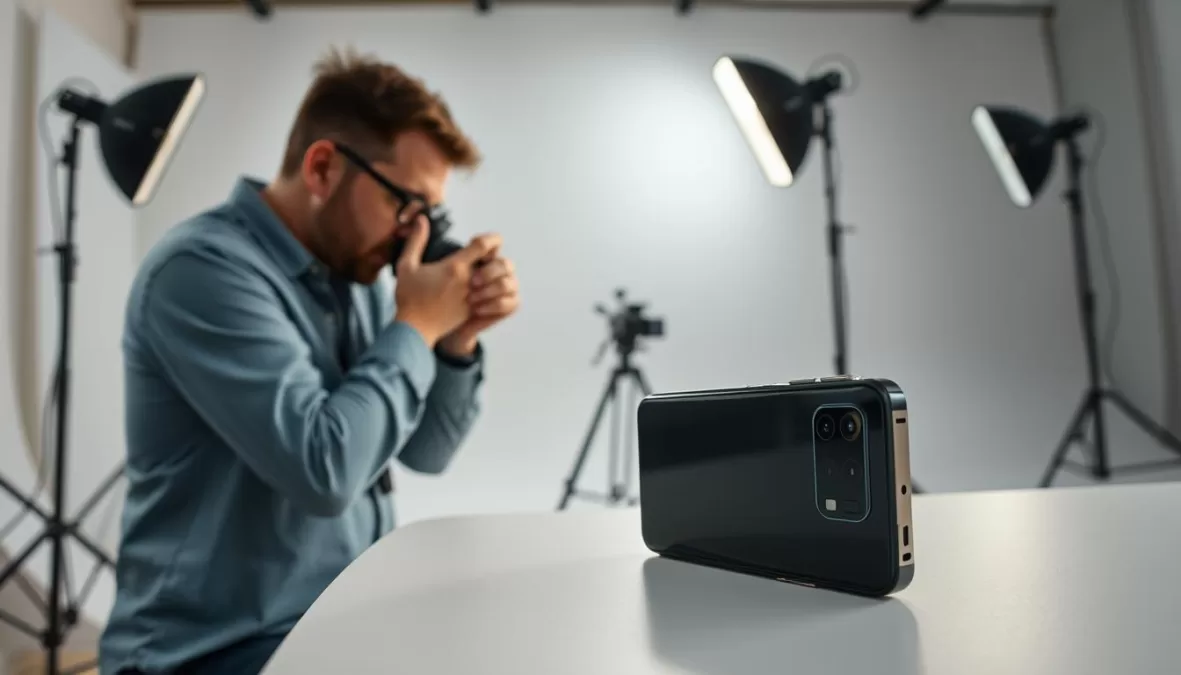
| Test Category | Description | Key Metrics |
|---|---|---|
| Battery Life | Simulated typical usage patterns | Screen-on time, battery drain rate |
| Camera Testing | Shooting in various lighting conditions | Image quality, low-light performance |
Key Factors in Our Rankings
Our rankings consider the overall user experience, factoring in software fluidity, update commitments, and unique features that enhance daily use. We also evaluated display quality using professional calibration tools to measure brightness, color accuracy, and refresh rate consistency in different ambient lighting conditions.
Performance testing included both benchmark scores and real-world tasks like app loading times, multitasking capabilities, and gaming performance with demanding titles.
- Evaluating display quality and technology
- Assessing performance and processing power
- Examining camera capabilities and special features
Top 10 Best Phone in the World 2025: The Ultimate Ranking
In 2025, the smartphone landscape is more competitive than ever, with AI-powered devices offering unparalleled user experiences. The year has seen significant advancements in smartphone technology, with various brands pushing the boundaries of innovation.
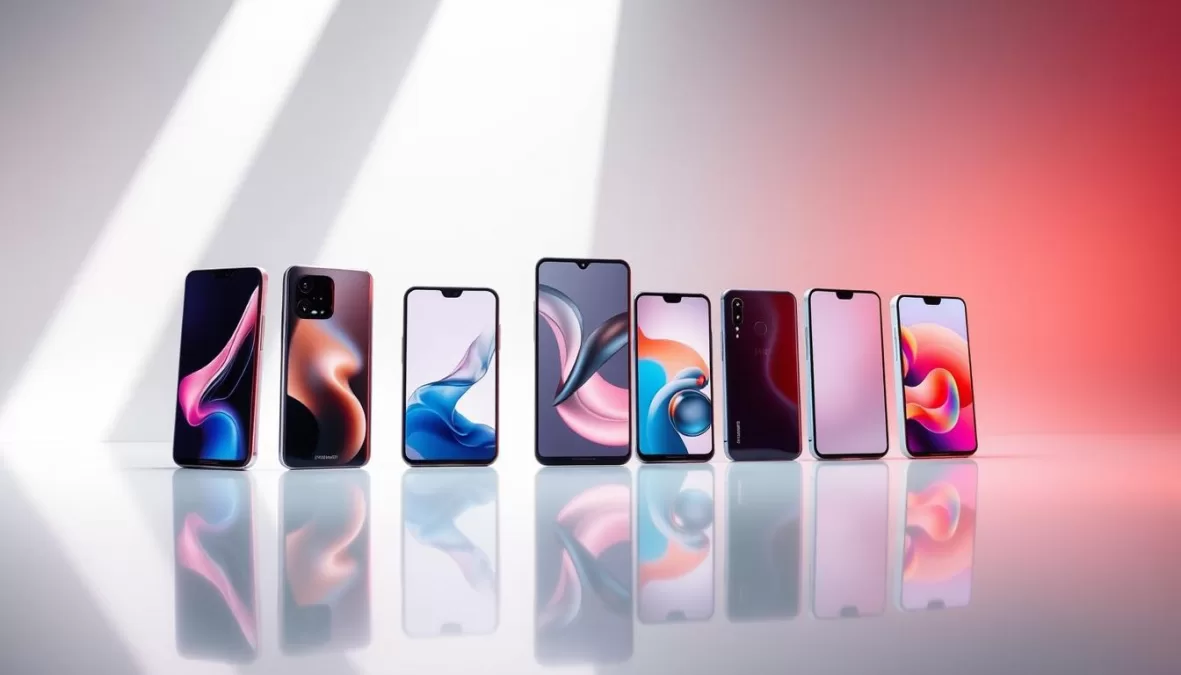
What’s Changed Since 2024
The smartphone industry has undergone substantial changes since 2024. AI capabilities have become the primary differentiator between flagship and mid-range devices. Chinese manufacturers have continued to gain global market share by offering feature-packed phones at competitive prices, challenging established brands.
- On-device AI processing has become standard, enabling features like real-time translation and advanced photo editing.
- Battery optimization through AI has extended typical usage time by 15-20% compared to 2024 models.
- Camera hardware improvements have been incremental, but computational photography advances have significantly enhanced image quality.
AI Features Transforming Smartphones
AI features are revolutionizing the smartphone experience. Real-time translation, advanced photo editing, and contextual awareness are transforming how we use our phones. These features are not only enhancing user experience but also making smartphones more intuitive and personalized.
- AI-driven cameras are capable of capturing professional-grade photos with ease.
- AI-powered battery optimization is ensuring longer battery life.
- Enhanced security features, such as facial recognition, are becoming more prevalent.
Value for Money Considerations
As flagship prices continue to rise, value for money has become a critical consideration for consumers. Many are looking for phones that offer 80% of premium features at 50% of the price. This shift is driving manufacturers to offer more competitive pricing without compromising on features.
- Mid-range devices are now offering premium features like AI capabilities and high-quality cameras.
- Consumers are prioritizing phones that offer the best balance between price and performance.
- Brand reputation and after-sales service are also influencing purchasing decisions.
The top 10 best phones of 2025 are a testament to the rapid advancements in smartphone technology. With AI at the forefront, these devices are redefining the user experience and setting new standards for the industry.
Samsung Galaxy S25 Ultra: The Ultimate Flagship

With its sophisticated integration of Galaxy AI and advanced hardware, the Samsung Galaxy S25 Ultra stands out as a flagship device. The latest Galaxy AI suite brings practical and useful features like real-time call translation, voice commands that work across multiple apps, and photo editing capabilities.
Design and Build Quality
The Samsung Galaxy S25 Ultra represents the pinnacle of smartphone technology in 2025, featuring a refined design with slightly rounded corners that improve ergonomics while maintaining the distinctive Ultra aesthetic. The device boasts a lightweight titanium frame and new resilient Corning Gorilla Armor2 glass, significantly enhancing its durability.
Key Design Highlights:
- Refined design with rounded corners for better ergonomics
- Lightweight titanium frame
- Corning Gorilla Armor2 glass for improved durability
Display and Performance
The Galaxy S25 Ultra features a stunning 6.9-inch anti-reflective AMOLED display that sets new standards for outdoor visibility, with a peak brightness of 3,000 nits and dramatically reduced glare compared to previous generations. Performance is bolstered by the upgraded Snapdragon8 Elite for Galaxy chipset and 12GB of RAM, further enhanced by a larger cooling chamber ideal for multimedia and gaming.
The display and performance combination makes the Galaxy S25 Ultra ideal for demanding tasks and extended gaming sessions.
Camera System
The camera system on the Galaxy S25 Ultra remains class-leading, with a 200MP main sensor, improved 50MP ultrawide lens, and dual telephoto lenses (3x and 5x optical zoom) that deliver exceptional detail and color accuracy. The upgraded 50MP ultrawide lens captures landscape and macro shots with greater detail and vibrancy.
Camera Highlights:
- 200MP main sensor for high-resolution imaging
- 50MP ultrawide lens for detailed landscape and macro shots
- Dual telephoto lenses with 3x and 5x optical zoom
Galaxy AI Features
Galaxy AI features have matured significantly, offering practical tools like real-time call translation, advanced photo editing capabilities, and contextual awareness that anticipates your needs. These AI functions surpass those on competing Android devices in speed, dependability, and overall usefulness.
The integration of AI enhances the overall user experience, making tasks more efficient and intuitive.
Pros and Cons
Pros:
- Exceptional performance with the Snapdragon8 Elite chipset
- Advanced camera system with multiple lenses
- Long-lasting 5000mAh battery
- Durable design with titanium frame and Corning Gorilla Armor2 glass
Cons:
- Charging speeds haven’t improved significantly from the previous generation
OnePlus 13: Performance Powerhouse
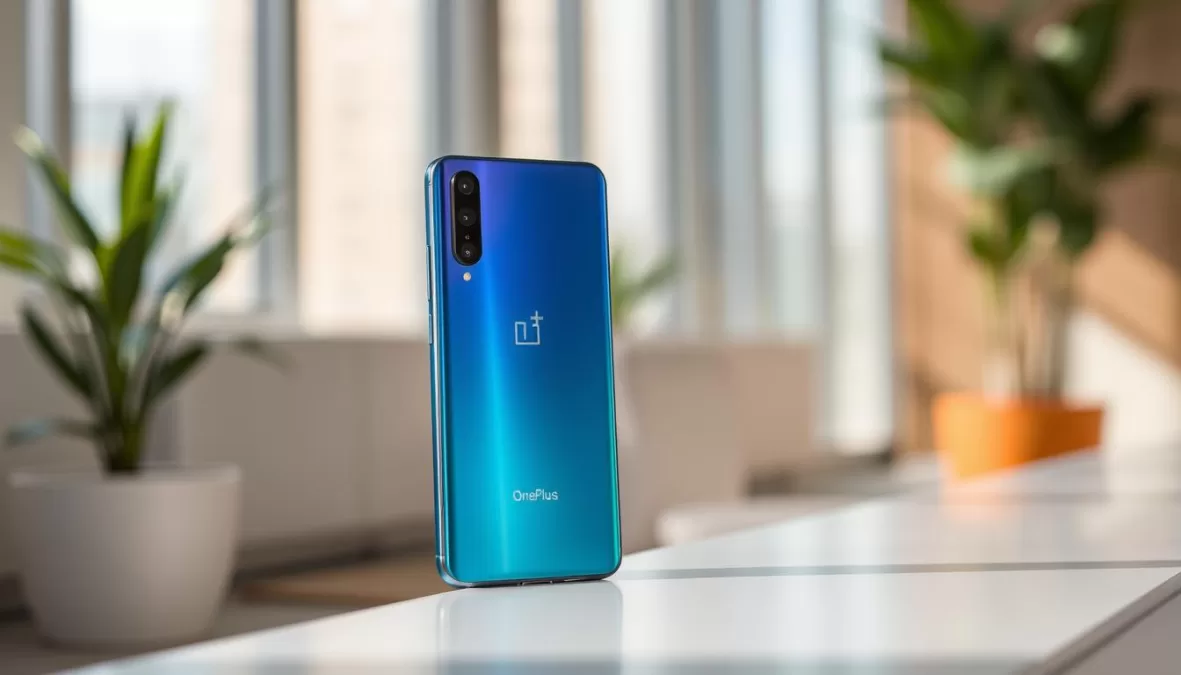
With its powerful Snapdragon 8 Elite chipset, the OnePlus 13 stands out as a true performance powerhouse. This latest offering from OnePlus continues the brand’s tradition of delivering flagship specifications at a competitive price point, making it an attractive option for tech enthusiasts.
Design and Build Quality
The OnePlus 13 boasts a premium design with a unique vegan microfiber finish that provides a soft-to-touch feel and improved grip. This distinctive finish sets it apart from the majority of glass-backed phones, offering both style and practicality. The phone’s durability is enhanced by its robust build quality, ensuring it can withstand daily wear and tear.
Display and Performance
The OnePlus 13 features one of the best displays available on a mobile phone, with a big screen that’s perfect for various activities. The display is not only visually impressive but also incredibly responsive, even when exposed to water. Paired with the Snapdragon 8 Elite chipset, the phone delivers exceptional performance, beating even the iPhone 16 Pro in multi-core processor tests.
Camera Capabilities
The camera system on the OnePlus 13 excels, particularly in capturing action shots by freezing motion. The integration of AI enhances the colors and details, providing a significant boost to the overall camera performance. While it may not be the absolute best in all scenarios, the camera capabilities have seen significant improvements, especially in low-light conditions and with moving subjects.
Battery Life and Charging
The OnePlus 13 is a battery life winner, with its 5,500mAh cell lasting nearly 20 hours in battery rundown tests. This outperforms many other flagship devices, including the big iPhone. Additionally, the phone supports 100W wired charging and 50W wireless charging, allowing for a full charge in under 30 minutes. This rapid charging capability makes battery anxiety a thing of the past.
Pros and Cons
Pros: Exceptional performance, long-lasting battery life, rapid charging capabilities, premium design.
Cons: Camera performance, while improved, still lags slightly behind the absolute best camera phones in some scenarios.
Apple iPhone 16 Pro Max: iOS Excellence
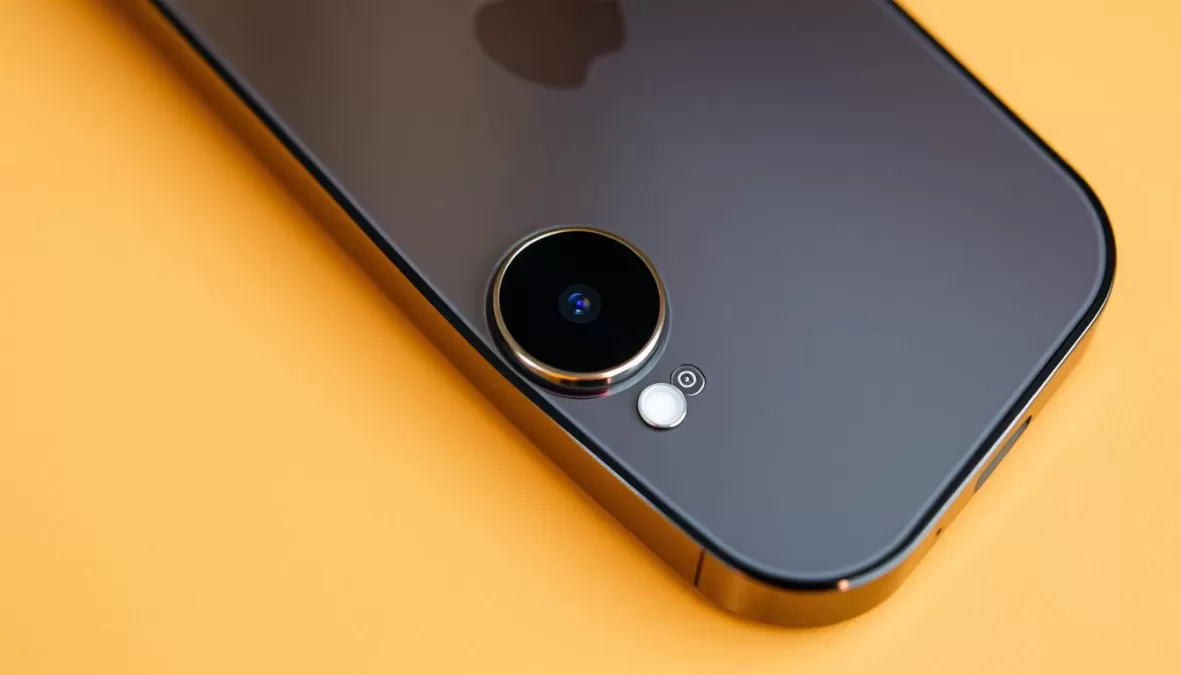
The iPhone 16 Pro Max represents a comprehensive package for premium users, boasting cutting-edge technology that sets it apart in the competitive smartphone market. With a range of innovative features, this device is designed to deliver an exceptional user experience.
Design and Camera Control Button
The iPhone 16 Pro Max introduces a noticeable design change with thinner bezels that enhance the larger screen feel, alongside the addition of the new Camera Control button. This physical switch allows for quick camera access and photo capturing without screen interaction, providing a more intuitive camera experience.
The design is not just about aesthetics; it’s also about functionality. The Camera Control button serves as a two-stage shutter button, offering more precise control when capturing photos and videos.
Display and Performance
The standout feature of the iPhone 16 Pro Max is its expansive and brilliant 6.9-inch AMOLED display, ideal for immersive media consumption and mobile productivity alike. The latest A18 Pro chip drives the phone’s performance, yielding significantly faster and more efficient on-device AI processing.
This performance boost is crucial for the various Apple Intelligence tools that promise advanced features like image generation, a more capable Siri, and notification summaries.
Camera System
The camera system on the iPhone 16 Pro Max excels in consistency and reliability, with the ability to capture 4K video at 120fps for high-quality slow-motion footage and improved computational photography for better low-light performance.
Additionally, the Audio Mix technology isolates and clarifies voices in recordings, making it a powerful tool for both photography and videography.
Apple Intelligence Features
The iPhone 16 Pro Max is positioned as Apple’s most “future-proof” device for the AI era, thanks to its suite of Apple Intelligence features. These features continue to expand with software updates, ensuring that the device stays ahead of the curve.
From image generation to enhanced Siri capabilities, the Apple Intelligence features are designed to make the user experience more seamless and integrated.
Pros and Cons
Pros: The iPhone 16 Pro Max offers a larger 6.9-inch AMOLED display, improved camera capabilities with the Camera Control button, exceptional performance with the A18 Pro chip, and advanced Apple Intelligence features.
Cons: The high price point may be a deterrent for some users, despite the device’s excellent long-term value through Apple’s industry-leading software support and strong resale value.
As the pinnacle of Apple’s smartphone offerings, the iPhone 16 Pro Max is a compelling choice for those seeking a premium device with cutting-edge technology and innovative features.
Google Pixel 9 Pro XL: AI Photography Champion
![]()
The Google Pixel 9 Pro XL stands out as a premier smartphone choice in 2025, particularly for its exceptional camera capabilities. This device continues Google’s tradition of excellence in computational photography, leveraging AI enhancements to deliver stunning results in virtually any lighting condition.
Design and Build Quality
The Pixel 9 Pro XL features a refined design with premium materials, enhancing its build quality. While some users might find the more mainstream aesthetic less distinctive than previous Pixel generations, the overall feel and durability are significantly improved.
Display and Performance
The phone boasts a 6.8-inch LTPO OLED display, offering excellent color accuracy, brightness, and adaptive refresh rate capabilities. Google’s Tensor G4 chipset prioritizes AI performance, enabling features like Magic Editor and Best Take, while delivering solid overall performance.
Camera System and AI Enhancements
The camera system on the Pixel 9 Pro XL is a highlight, featuring a main, ultrawide, and 5x telephoto lenses that deliver exceptional image quality. AI enhancements play a crucial role in improving photo quality, especially in challenging lighting conditions.
Software Experience and Updates
Google continues to excel in providing a seamless software experience with the Pixel 9 Pro XL, running Android 14 out of the box. The company’s commitment to seven years of OS and security updates ensures the phone remains current and secure through 2032.
Pros and Cons
Pros: Exceptional camera performance, excellent display, solid performance, and long-term software support.
Cons: Some users may find the design less distinctive, and AI features can be hit-and-miss.
Xiaomi 15 Ultra: Camera Innovation Leader
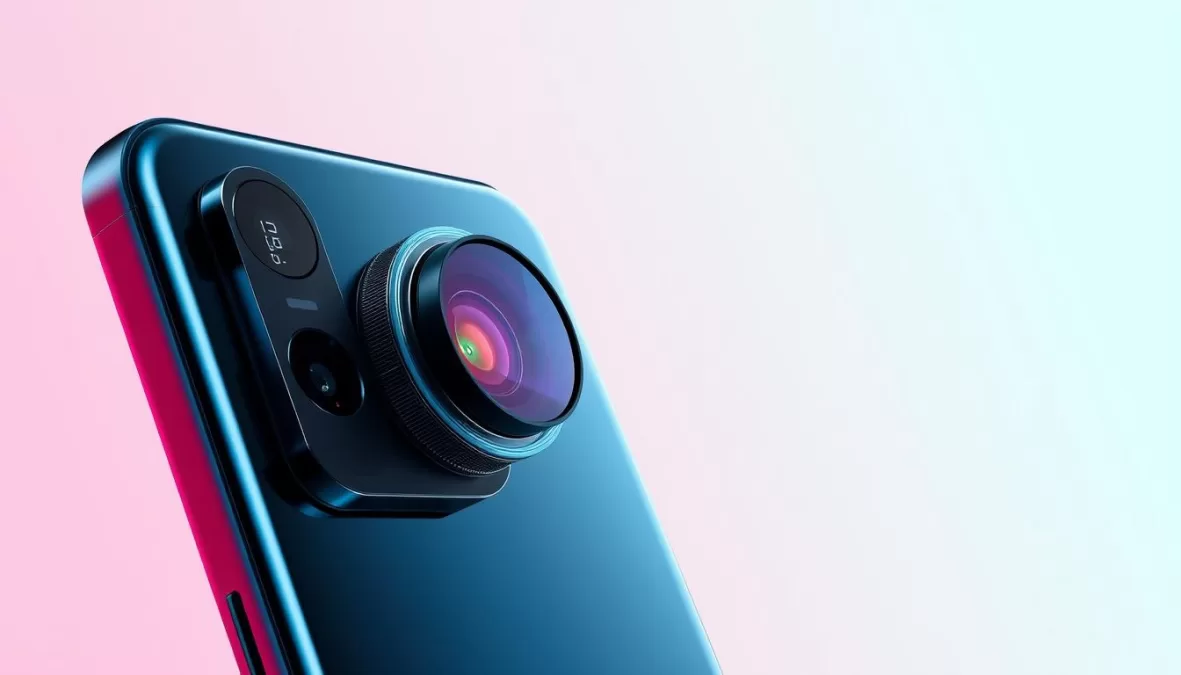
With its revolutionary camera system, the Xiaomi 15 Ultra sets a new standard for smartphone photography. This phone is designed for those who prioritize camera capabilities, offering a quad-camera setup that includes a 200Mp periscope lens with 4.3x optical zoom.
Design and Build Quality
The Xiaomi 15 Ultra boasts a durable yet chunky design, making it both stylish and robust. The phone’s build quality is exceptional, with a premium feel that is sure to impress.
The device is available in several color options, catering to different tastes and preferences. Its sturdy construction ensures that it can withstand daily wear and tear.
Display and Performance
The Xiaomi 15 Ultra features a stunning 6.7-inch LTPO AMOLED display that offers exceptional brightness, color accuracy, and a variable refresh rate from 1-120Hz. This display is perfect for watching videos, gaming, and browsing through your favorite apps.
Performance is top-tier, thanks to the Snapdragon 8 Elite chipset paired with 16GB of RAM. This powerful combination ensures that the phone handles everything from intensive gaming to complex computational photography with ease.
Revolutionary Camera System
The camera system on the Xiaomi 15 Ultra is truly revolutionary. With a quad-camera setup that includes a 50Mp main lens, a 50Mp ultrawide lens, a 50Mp 3x telephoto lens, and a 200Mp periscope lens with 4.3x optical zoom, this phone can capture stunning images in various conditions.
The optional Photography Kit accessory further enhances the camera capabilities, adding physical controls and an additional grip that brings the smartphone experience closer to a dedicated camera.
Software and Battery Life
The Xiaomi 15 Ultra runs on Xiaomi’s HyperOS 2 software, which, while feature-rich, can be inconsistent and not as intuitive as some competing Android skins.
Battery life is impressive, with a 5,300mAh cell that easily lasts a full day. The phone also supports 90W fast charging, providing a full charge in under 30 minutes.
Pros and Cons
Pros: Exceptional camera system, top-tier performance, gorgeous display, strong battery life.
Cons: Software can be inconsistent, design is chunky.
Oppo Find X8 Pro: Premium All-Rounder
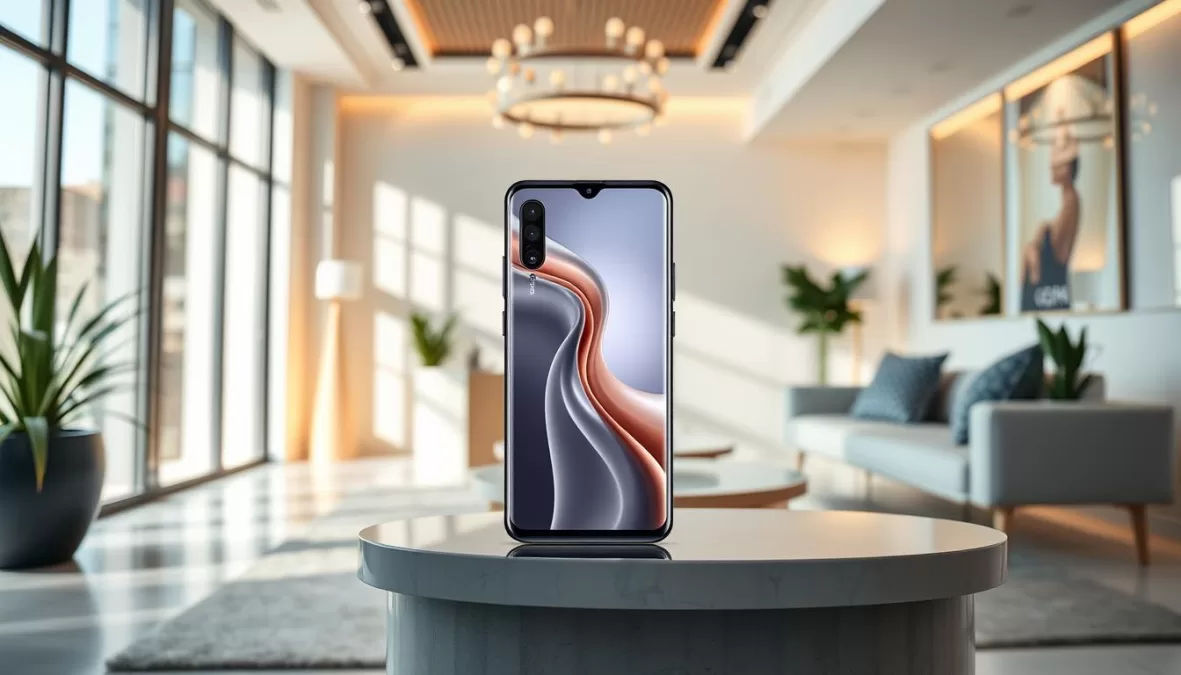
Oppo’s latest flagship, the Find X8 Pro, brings a host of exciting features that set it apart from the competition. After Oppo decided not to release its Find X6 and Find X7 series flagships outside China, the Find X8 series marks a triumphant return to Europe. Both the Find X8 and Find X8 Pro are excellent phones, but the latter has a slight upper hand.
Design and Build Quality
The Oppo Find X8 Pro represents a triumphant return to global markets for Oppo’s flagship line, offering a refined design with premium materials and excellent build quality. The phone’s design is not only aesthetically pleasing but also durable, making it a great choice for those who value both form and function.
Premium Materials are used throughout the device, giving it a solid feel in the hand. The build quality is excellent, with attention to detail that is evident in every aspect of the phone’s construction.
Display and Performance
The 6.8-inch LTPO AMOLED display on the Find X8 Pro offers excellent brightness, color accuracy, and adaptive refresh rate capabilities that enhance both visual experience and battery efficiency. Whether you’re watching videos or gaming, the display provides a superb visual experience.
The phone’s Snapdragon 8 Elite chipset paired with 16GB of RAM ensures that performance is exceptional, handling everything from intensive gaming to multitasking with ease.
Camera Capabilities
The camera system on the Oppo Find X8 Pro is a major highlight, featuring Hasselblad color tuning and exceptional hardware that delivers outstanding image quality across various lighting conditions. While there are a couple of small camera downgrades compared to the Find X7 Ultra, the overall camera performance is still superb.
Exceptional image quality is achieved through the combination of advanced hardware and software tuning, making the Find X8 Pro a top choice for photography enthusiasts.
Software and Battery Life
ColorOS has matured significantly, offering a feature-rich experience with useful AI enhancements, though some users may find it more complex than stock Android. The software is designed to provide a seamless user experience, with various features that enhance productivity and entertainment.
The 5,600mAh battery easily lasts through a full day of heavy use, and 80W wired charging provides a full charge in about 35 minutes, making it convenient for users who need their device to be ready quickly.
Pros and Cons
The Oppo Find X8 Pro is a superb phone with many strengths, including its excellent camera system, impressive battery life, and powerful performance. However, it may not be perfect for everyone, particularly those who prefer a simpler software experience.
Pros: Excellent camera system, long battery life, powerful performance.
Cons: Software can be complex, minor camera downgrades compared to previous model.
Google Pixel 9a: Mid-Range Marvel
![]()
For those seeking a reliable phone without breaking the bank, the Google Pixel 9a is an excellent choice. With a price tag around £500/$500, it offers a compelling blend of features that make it stand out in the mid-range segment.
Design and Build Quality
The Google Pixel 9a boasts a premium design that, while not flashy, is both durable and comfortable to hold. The phone’s dimensions and weight are well-balanced, making it easy to use with one hand. Although some users might find the design a bit nondescript, it exudes a sense of quality.
Display and Performance
The 6.3-inch P-OLED display on the Pixel 9a is a highlight, offering excellent color accuracy, brightness, and a smooth 90Hz refresh rate. This display is not just pleasing to the eye but also provides a seamless user experience. Paired with the efficient Tensor G4 chip, the phone delivers solid performance that handles daily tasks with ease.
Camera System
The Pixel 9a’s 48MP main camera is a powerhouse, leveraging Google’s computational photography expertise to capture stunning images in various lighting conditions. While it lacks a telephoto lens, the camera’s capabilities make it a strong competitor to flagship phones.
Software and Updates
One of the Pixel 9a’s strongest selling points is its software experience. Running Android 15, it benefits from Google’s clean and intuitive Android implementation, complete with exclusive Pixel features and AI enhancements. Moreover, the commitment to seven years of software and security updates makes it an excellent long-term investment.
Pros and Cons
Pros: Excellent camera performance, great display, solid battery life, and timely software updates.
Cons: Lack of telephoto lens, slow 23W charging, and a somewhat nondescript design.
In conclusion, the Google Pixel 9a is a mid-range marvel that offers exceptional value for its price. While it may not excel in every area, its strengths make it a compelling choice for those looking for a reliable and feature-rich smartphone.
Nothing Phone (3a): Style Meets Substance
With a price tag of just £329/$379, the Nothing Phone (3a) is a budget-friendly option that doesn’t compromise on style or performance. This mid-range smartphone is making waves with its unique design and impressive specs, making it a compelling choice for those seeking a well-rounded smartphone experience.

Unique Design Elements
The Nothing Phone (3a) brings the brand’s distinctive transparent design and Glyph interface to a more affordable price point without compromising on build quality or premium feel. Its unique Glyph lighting system on the rear serves both aesthetic and functional purposes, providing visual notifications and status indicators that are both stylish and practical.
The phone’s design is not just about looks; it’s also about creating an experience that is both intuitive and engaging. The transparent design elements give the phone a futuristic feel, making it stand out in a crowded market.
Display and Performance
The Nothing Phone (3a) boasts a 6.7-inch 120Hz OLED display that offers excellent visual quality with vibrant colors and smooth scrolling, rivalling displays found on much more expensive phones. This makes it ideal for watching videos, browsing, and gaming.
In terms of performance, the phone is equipped with capable hardware that ensures smooth operation and efficient multitasking, making it a great choice for daily use.
Camera Capabilities
The camera system on the Nothing Phone (3a) includes a 50MP main sensor, a 50MP telephoto lens, and a 32MP selfie camera. While the 8MP ultrawide camera is somewhat of a disappointment, the overall camera performance is good for the price point, delivering detailed and well-balanced images in good lighting.
Software Experience and Battery Life
Nothing OS provides a clean, minimalist take on Android 15 with thoughtful customizations and optimizations that enhance the user experience without unnecessary bloat. The phone also boasts a 5,000mAh battery that easily lasts through a full day of heavy use, supporting 45W fast charging for quick top-ups.
The combination of great battery life and efficient software makes the Nothing Phone (3a) a great value proposition in the mid-range segment.
CMF Phone 2 Pro: Budget Champion

The CMF Phone 2 Pro is revolutionizing the budget smartphone market with its impressive features at an unbeatable price. At just $279, this device is redefining what’s possible in the budget segment.
Design and Customization
The CMF Phone 2 Pro boasts a unique modular design that allows users to easily swap back covers and attach screw-in accessories like kickstands and card holders. This level of customization is rare in modern smartphones, especially at this price point.
The phone’s design focuses on user control, enabling users to personalize their device to suit their preferences. With the ability to expand storage via a MicroSD card, users have more flexibility with their device.
Display and Performance
The CMF Phone 2 Pro features a 6.77-inch OLED display that offers a peak brightness of 3,000 nits, ensuring excellent visibility even in direct sunlight. This represents a significant upgrade from its predecessor, with improved contrast and color reproduction ideal for media consumption.
In terms of performance, the phone is powered by the MediaTek Dimensity 7300 Pro processor, which provides efficient performance and helps in maintaining a smooth user experience.
Camera System
The camera system on the CMF Phone 2 Pro exceeds expectations for its price range. The 50MP main sensor delivers detailed and well-balanced images in good lighting conditions. Additionally, the inclusion of a dedicated 50MP telephoto lens provides optical zoom capabilities typically reserved for flagship devices.
This camera setup allows users to capture high-quality photos with ease, making it a compelling choice for those who value camera performance.
Value Proposition
The CMF Phone 2 Pro offers exceptional value at $279, delivering features typically found on much more expensive devices. The combination of its unique design, impressive display, capable camera system, and large 5,000mAh battery makes it a standout in the budget segment.
With its streamlined interpretation of Android, enriched with unique widgets, the phone provides a bloatware-light experience that enhances usability without unnecessary clutter.
Motorola Razr 60 Ultra: Foldable Innovation
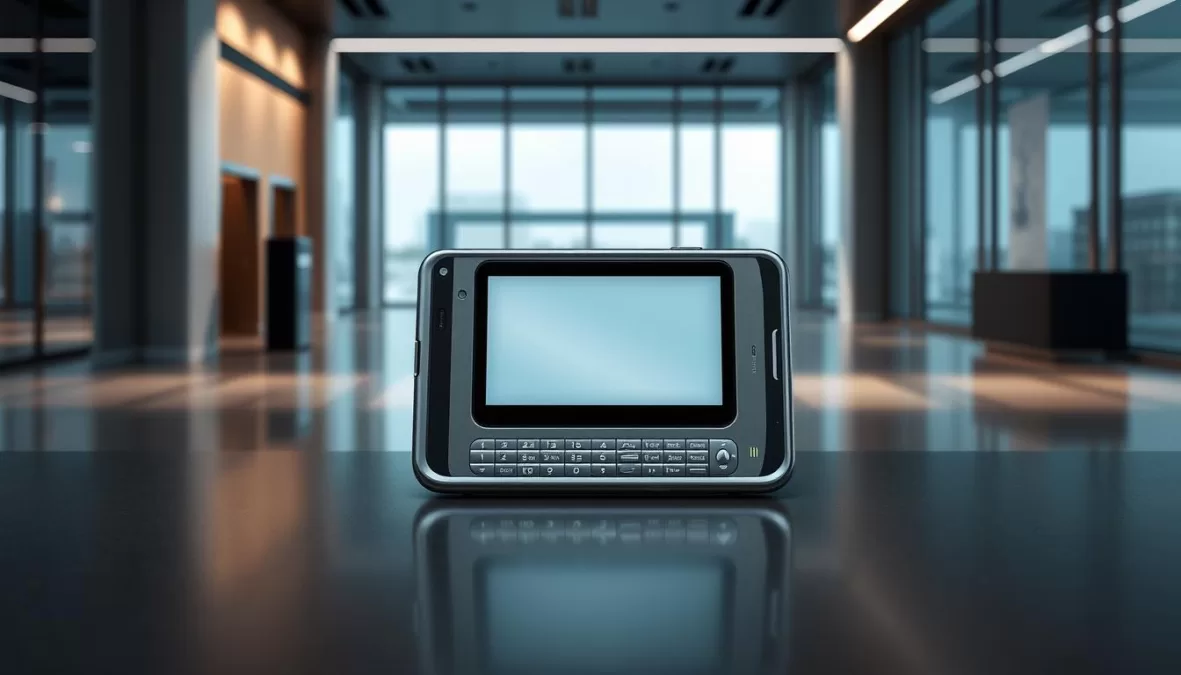
The Motorola Razr60 Ultra is redefining the foldable phone landscape with its innovative design and cutting-edge technology. As the latest iteration of Motorola’s Razr series, it brings significant upgrades that make it a top contender in the foldable market.
Foldable Design and Durability
The Razr60 Ultra boasts a stunning new design with premium materials, including Alcantara and real wood finishes, elevating its aesthetic beyond typical smartphone designs. Its robust build ensures durability, making it a reliable choice for users.
Durability is a key feature of the Razr60 Ultra, with a tough build that can withstand daily wear and tear. The phone’s design is not just about looks; it’s also about withstanding the rigors of frequent use.
Dual Display Experience
The phone features a versatile 4-inch cover screen that offers full app functionality, allowing users to utilize most applications without needing to open the phone. The 7-inch internal display has a barely noticeable crease, enhancing the viewing experience.
The dual display setup provides users with flexibility and convenience, making it easier to manage tasks and enjoy content on the go.
Performance and Camera System
Equipped with Qualcomm’s flagship Snapdragon 8 Elite chip and 12GB of RAM, the Razr60 Ultra delivers exceptional performance, handling intensive gaming and multitasking with ease. The camera system provides good results in most conditions, though it lacks a dedicated telephoto lens.
The camera system is capable, but the absence of a telephoto lens is disappointing at this price point. Nonetheless, the phone’s overall performance makes it a strong contender in the market.
Battery Life and Software
The Razr60 Ultra features a 4700mAh cell that easily lasts through a full day of use, with 68W fast charging providing a full charge in about 40 minutes. Motorola’s clean implementation of Android, along with thoughtful additions, enhances the foldable experience.
While the commitment to only three years of OS updates and four years of security patches falls short of competitors, the phone’s battery life and charging capabilities are significant advantages.
How to Choose the Right Phone for Your Needs
With numerous options available, choosing the right phone requires a thoughtful evaluation of your priorities. The diverse range of smartphones in 2025 means that understanding your specific needs is more important than ever.
Matching Features to Your Usage Patterns
Choosing the right smartphone in 2025 requires careful consideration of your specific usage patterns and priorities. For photography enthusiasts, prioritizing phones with versatile camera systems that include ultrawide and telephoto lenses, along with advanced computational photography features, is essential. As “The best camera is the one you have with you,” a quote often attributed to Chase Jarvis, rings true, having the right camera features can make a significant difference.
- For heavy users, focus on devices with large batteries (5,000mAh+) and fast charging capabilities.
- Gaming enthusiasts should look for phones with powerful processors, efficient cooling systems, and high refresh rate displays.
- Gaming-specific features like shoulder triggers or gaming modes can enhance the gaming experience.
Budget Considerations
Budget considerations are increasingly important as flagship prices continue to rise. However, mid-range options now offer 80-90% of premium features at significantly lower prices. It’s crucial to balance your expectations with your budget to find the best value in a smartphone.
“The best value isn’t always the cheapest option, but the one that meets your needs at the right price.”
Long-Term Software Support
Long-term software support has become a crucial factor in choosing a smartphone. Brands like Google, Samsung, and Apple offer up to seven years of OS and security updates, extending the useful life of your device. This aspect is vital for ensuring your phone remains secure and functional over time.
By carefully considering your usage patterns, budget, and the importance of long-term software support, you can make an informed decision when selecting your next smartphone.
The Future of Smartphones: What’s Coming Next
With rapid innovations on the horizon, the smartphone industry is set to redefine our expectations and experiences. As technology continues to advance, we can expect significant improvements in various aspects of smartphones.
Emerging Technologies
The smartphone industry is on the cusp of several transformative technologies that will revolutionize our interaction with mobile devices. Some of the key emerging technologies include:
- On-device AI capabilities: More sophisticated models will perform complex tasks without cloud connectivity, enhancing privacy and reducing latency.
- Advanced Display Technology: Truly bezel-less designs with under-display cameras will become more refined and mainstream, while foldable and rollable displays continue to mature.
- Battery Technology Breakthroughs: Solid-state batteries promise higher energy density, faster charging, and improved safety compared to current lithium-ion technology.
- Enhanced Camera Systems: Computational photography will continue to improve, potentially reducing the need for multiple physical lenses while still enhancing image quality across all conditions.
Sustainability Trends
Sustainability has become a major focus in the smartphone industry, with manufacturers taking steps to reduce electronic waste and environmental impact. Some of the key sustainability trends include:
- Increased use of recycled materials: Manufacturers are incorporating more recycled materials into their devices.
- Design for repairability: Smartphones are being designed to be more repairable, reducing the need for replacement.
- Extended software support: Manufacturers are extending software support to reduce electronic waste and ensure that devices remain secure and functional for longer.
As the smartphone industry continues to evolve, we can expect to see even more innovative features and technologies that will enhance our mobile experience. With a focus on sustainability and emerging technologies, the future of smartphones looks bright.
Conclusion
As we conclude our exploration of the top phones of 2025, it’s clear that the smartphone landscape has evolved significantly. The year has brought forth a plethora of devices that cater to diverse needs and budgets, ranging from ultra-premium flagships to surprisingly capable budget options.
The premium segment continues to be defined by devices like Samsung’s Galaxy S25 Ultra and Apple’s iPhone 16 Pro Max, which offer exceptional build quality, advanced camera capabilities, and ecosystem advantages. These flagship models set a high standard for the industry, with features like advanced AI capabilities, high-quality displays, and robust performance.
For those looking for alternatives within the Android ecosystem, phones like the OnePlus 13 and Google Pixel 9 Pro XL offer compelling options with unique strengths in performance, camera capabilities, and software experiences. The mid-range segment has also become increasingly competitive, with devices like the Google Pixel 9a and Nothing Phone (3a) providing flagship-level experiences at significantly lower prices.
Budget-conscious consumers are not left behind either, as options like the CMF Phone 2 Pro demonstrate that even at lower price points, consumers can expect excellent displays, decent performance, and good battery life. This democratization of technology is a significant trend in 2025, making advanced smartphone features more accessible to a wider audience.
As we look toward the future, the continued evolution of AI capabilities, camera systems, and battery technology promises to make smartphones even more capable and integral to our daily lives. The smartphone industry is poised for further innovation, with emerging technologies and sustainability trends set to shape the next generation of mobile devices.
In conclusion, the best phones of 2025 offer something for everyone, whether you’re looking for premium features, value for money, or budget-friendly options. As the industry continues to evolve, consumers can expect even more exciting developments in the world of smartphones.

